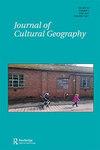“Don’t call me a Cajun!”: race and representation in Louisiana’s Acadiana region
IF 0.7
Q3 GEOGRAPHY
引用次数: 3
Abstract
ABSTRACT In southwestern Louisiana, the public sphere is dominated by the image of the Cajuns, presented as a hardy, likable people who have overcome significant obstacles since their arrival as Acadians in the late eighteenth century. Across the cultural region designated “Acadiana,” which comprises 22 counties, nearly 30% of the population is black (or Creole, mixed-race peoples generally identifying as black). Contributions of non-whites to the region’s history are usually not incorporated into the public historical narrative, and the erasure of these groups’ influences on the state’s cultural “gumbo” has profound symbolic and material consequences. Black/Creole residents note that much of their culture – primarily music and foodways – has been repackaged as Cajun or subsumed under the Cajun label and that they are unable to take advantage of the benefits that Creole-oriented tourism could bring to a region in which half of the counties are designated “black high poverty parishes.” Using mixed methods, including interviews, archival analysis, and census data, this paper explores the social, political, and economic consequences of the domination of Cajuns in the south Louisiana memorial and representational landscape and argues that commemorative silences in what Alderman et al. have called the “memorial arena” perpetuate a hegemonic social order.“别叫我卡津人!”:路易斯安那州阿卡迪亚地区的种族和代表权
摘要在路易斯安那州西南部,卡戎人的形象占据了公共领域的主导地位,他们是一个顽强、讨人喜欢的人,自18世纪末作为阿卡迪亚人来到这里以来,他们克服了重大障碍。在由22个县组成的“阿卡迪亚”文化区,近30%的人口是黑人(或克里奥尔人,通常被认定为黑人的混血民族)。非白人对该地区历史的贡献通常不会被纳入公共历史叙事,消除这些群体对该州文化“口香糖”的影响会产生深远的象征和物质后果。黑人/克里奥尔居民注意到,他们的大部分文化——主要是音乐和美食——都被重新包装为卡郡,或被归入卡郡的标签下,他们无法利用克里奥尔旅游业可能给这个一半的县被指定为“黑人高贫困教区”的地区带来的好处,档案分析和人口普查数据,本文探讨了卡戎人在路易斯安那州南部纪念馆和代表性景观中的统治所带来的社会、政治和经济后果,并认为奥尔德曼等人所称的“纪念竞技场”中的纪念沉默延续了霸权社会秩序。
本文章由计算机程序翻译,如有差异,请以英文原文为准。
求助全文
约1分钟内获得全文
求助全文
来源期刊

Journal of Cultural Geography
GEOGRAPHY-
CiteScore
1.70
自引率
22.20%
发文量
15
期刊介绍:
Since 1979 this lively journal has provided an international forum for scholarly research devoted to the spatial aspects of human groups, their activities, associated landscapes, and other cultural phenomena. The journal features high quality articles that are written in an accessible style. With a suite of full-length research articles, interpretive essays, special thematic issues devoted to major topics of interest, and book reviews, the Journal of Cultural Geography remains an indispensable resource both within and beyond the academic community. The journal"s audience includes the well-read general public and specialists from geography, ethnic studies, history, historic preservation.
 求助内容:
求助内容: 应助结果提醒方式:
应助结果提醒方式:


